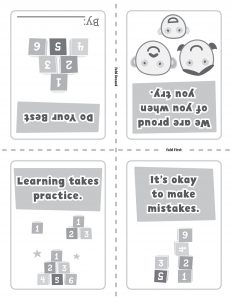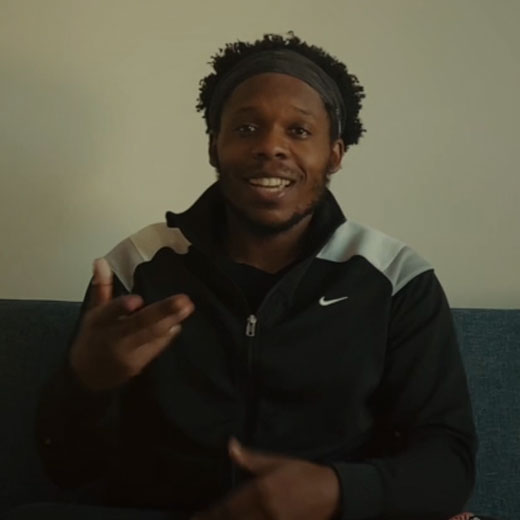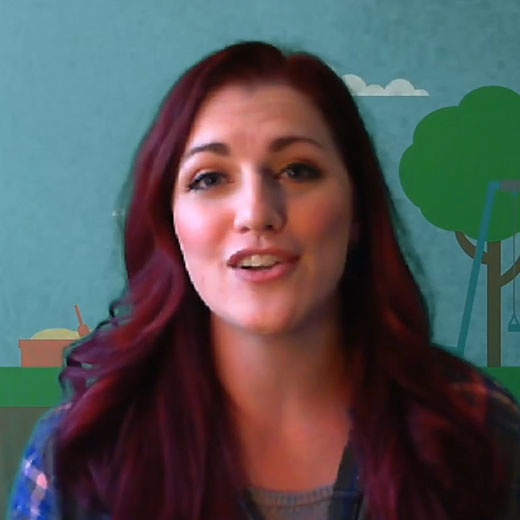Children can get discouraged when things don’t seem to be going right. It is good to remind them that it takes time to learn and master a new skill. It is important not to give up but to keep trying. Assure the children in your care that you are proud of them, not just when it all goes to plan, but when they do the best they can. As children’s confidence grows, they start to build a positive self-concept and resilience. They start to be proud of themselves when they have done their best that day.
Be Your Best Self
Be
Be Your
Be Your Best
Be Your Best Self
In the classroom
Even if it’s Zoom
C’mon – get in the game
Cause we need you there
And it’s nice to share
We love when the whole team does the same
Be
Be Your
Be Your Best
Be Your Best Self
Sometimes it feels like
It just didn’t go right
Still you tried your best all day
We are proud of you
And all the good you do
And we are with you all the way
Be
Be Your
Be Your Best
Be Your Best Self
To make a choice that’s smart
Here’s where you start
Use your head – listen to your heart
You better believe we’re here to help
As you can see
Time for you to be…
Be
Be Your
Be Your Best
Be Your Best Self
©2020 Tepsich/Welsh
Activities
Think About It
Standard: 16.2.PK-K.5S Express an opinion about a story or experience using visual supports and speaking prompts (e.g., I think…; I like…). 16.1.K.B.4.4 – Demonstrate confidence in own abilities. 16.1.PK.B – Recognize that everyone has personal traits which guide behavior and choices.
Explore these questions with your child:
- What are some things you are good at doing?
- What makes you proud?
- How can you show others you are proud of them?
Do It
Tightrope
Standard: 10.4.PK.A – Demonstrate coordination of body movements in active play 10.4.K.B.2 Engage in large motor activities that require strength and balance. 16.1.K.B.4.4 Demonstrate confidence in own abilities.
Have you ever seen a tightrope walker? Walking on a tightrope takes a lot of practice. Tightrope walkers have to keep on trying for a long time before they become good at their craft. Here’s an activity to help your child learn that “If you keep trying, you’ll get better!”
Keep Trying – Create a Tightrope to Talk About Practice
Learn Together
Standard: 16.1.K.B.4.4 Demonstrate confidence in own abilities. 16.1.PK.B – Recognize that everyone has personal traits which guide behavior and choices
Try to learn a new skill together. Try a new recipe. Practice balancing on one foot. Try jump-roping. Model for children that we aren’t always good at something the first few times we do it. The key is to keep trying.
Make It
Encouragement Jar
Standard: 1.4.PK-K.B – Use a combination of drawing, dictating, and writing. 16.1.K.B.4.4 Demonstrate confidence in own abilities. 16.1.PK.B – Recognize that everyone has personal traits which guide behavior and choices
Daily encouragements help kids learn to support themselves when the going gets tough, as well as start the day off right! Your child can pull a card from their jar every morning or whenever she needs a boost.
Proud Pictures
Standard: 1.4.PK-K.B – Use a combination of drawing, dictating, and writing. 16.2.PK-K.5S Express an opinion about a story or experience using visual supports and speaking prompts (e.g., I think…; I like…).
Tell your child about a skill you learned that made you feel different. Invite your child to share how they felt when they learned to do something new, like tie their shoes, pour juice or write their name. You may want to define new words for them, such as “proud.” Help your child create artwork of them doing something new. Older children might also want to draw pictures of what they want to be when they grow up.
Proud Pictures – Drawing What We Learned
Set Goals
Standard: AL.2.PK.A – Work toward completing a task, even if challenging, and despite interruptions. 16.1.PK.B – Recognize that everyone has personal traits which guide behavior and choices
Help your child set a goal and work towards achieving it! Help your child set a small goal this week and work to achieve it. Maybe your child wants to be a good friend. Ask your child for one small thing they can do to work towards that. Maybe your child would like to read more this summer. Set a goal to read together once a day. Recognizing that big goals are made up of small steps is a good lesson for all of us.
Share It
Talk Together
Standard: 16.2.PK-K.5S Express an opinion about a story or experience using visual supports and speaking prompts (e.g., I think…; I like…). 16.1.K.B.4.4 – Demonstrate confidence in own abilities. 16.1.PK.B – Recognize that everyone has personal traits which guide behavior and choices.
What are some ways you can be your best self?
- Recognize and reinforce when children are trying their best
- Let your child teach you about something they have learned
I Can’t…Yet
Standard: 16.1.K.B.4.4 – Demonstrate confidence in own abilities. 16.1.PK.B – Recognize that everyone has personal traits which guide behavior and choices.
Sometimes children say “I can’t…”. “I can’t write my name.” “I can’t read that story.” Try helping them to replace “I can’t” with “I can’t yet…” or “I’m learning to…”. Those simple changes will make a big difference in how a child feels about their skills.
Read About It
I Am Enough, by Grace Byers
This book helps us reaffirm the idea that we are all here for a purpose, we are more than enough and we need to believe it. Use this text to start a conversation with children about how they can be their best selves.
Tomorrow I’ll be Brave, by Jessica Hische
This book helps children understand they don’t need to be everything, every day. There is always tomorrow to try more and be their best self.
Amazing Grace, by Mary Hoffman
This book reminds us that we can do our best despite what others say.
All In a Day, by Cynthia Rylant
This book brings a subtle message that every day is a chance to be our best selves.












